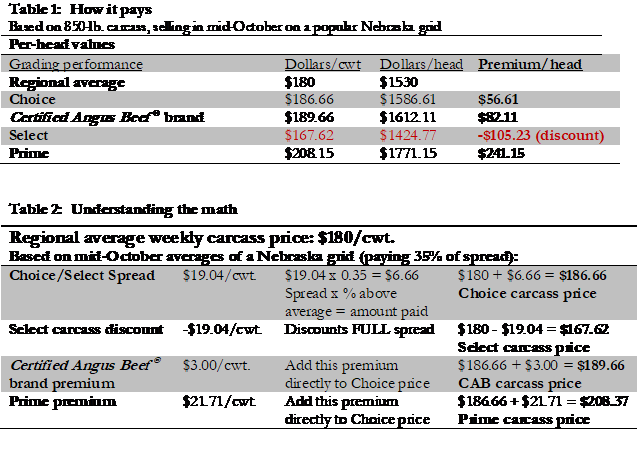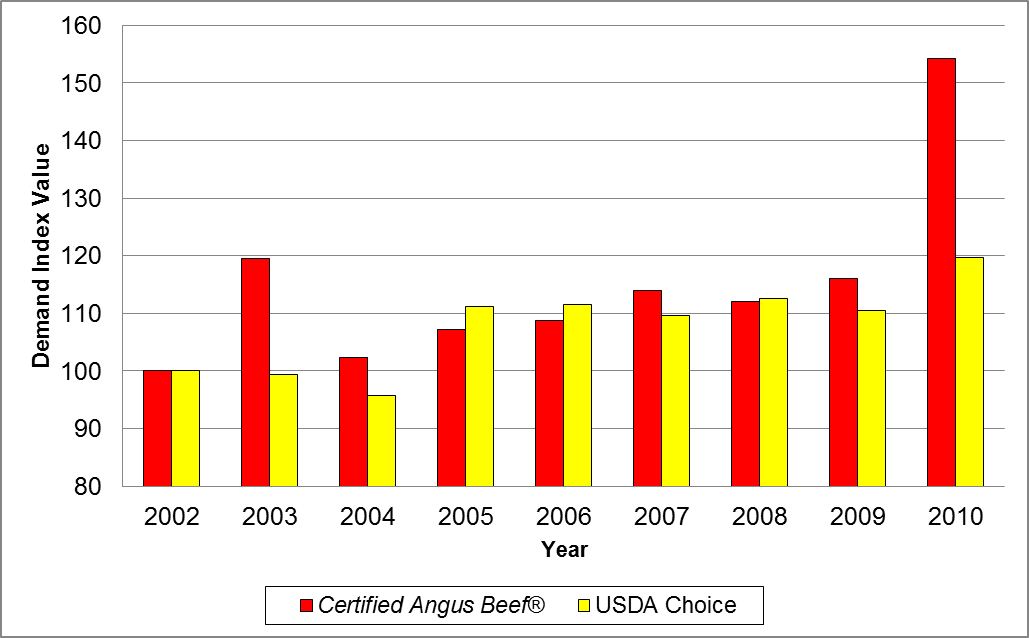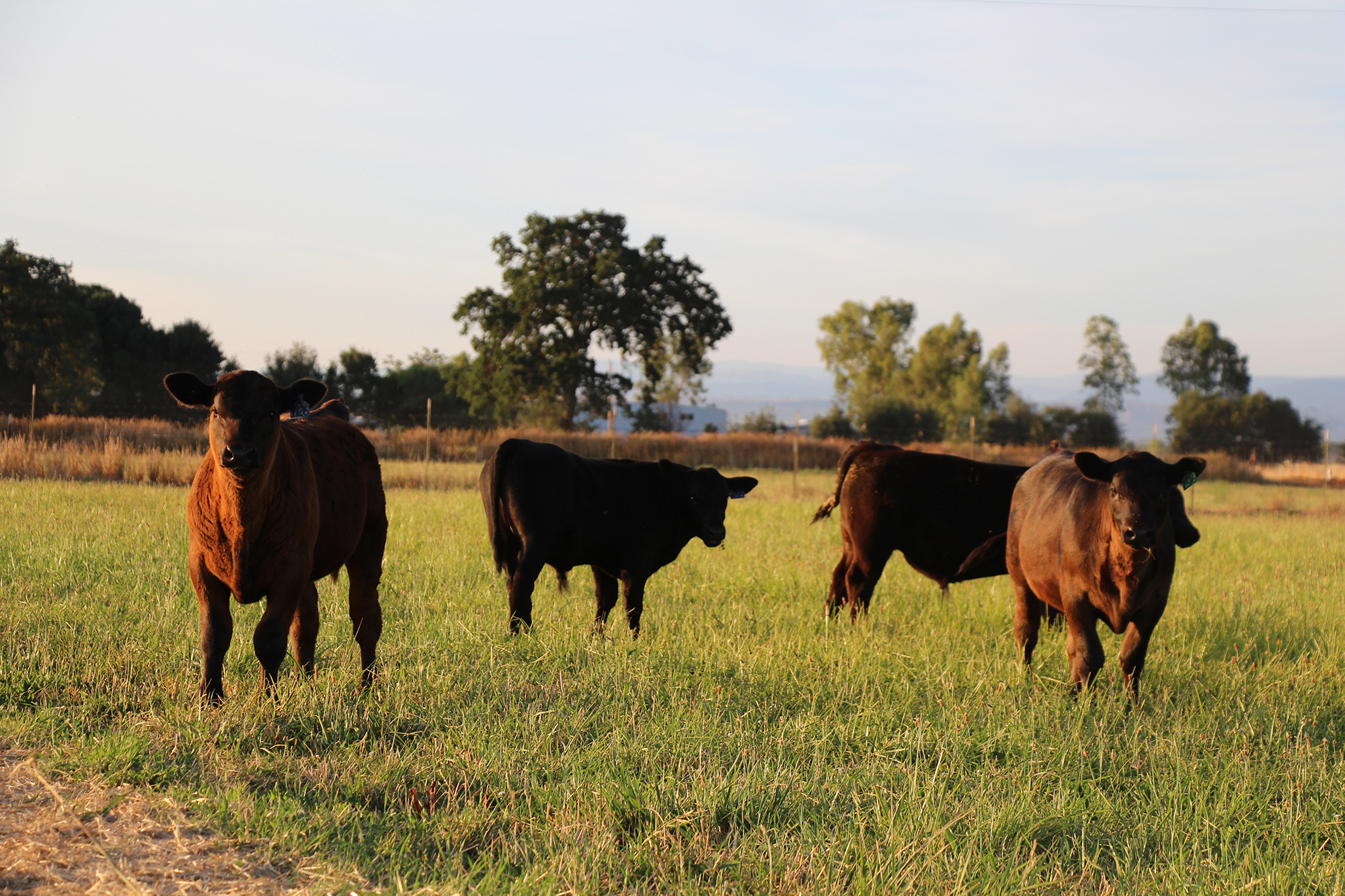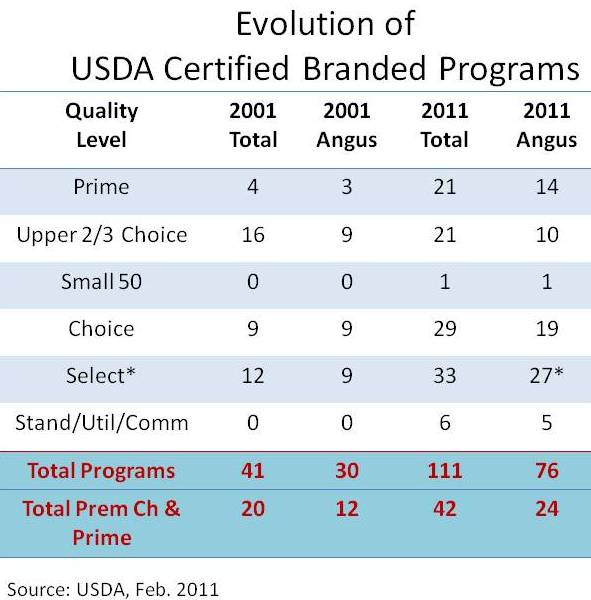
More choices, less Choice beef
Trying to please every beef customer takes more of the best
by Laura Nelson
A wider price gap between Select grade boxed beef and Choice or better—the Choice/Select spread—always comes back to supply and demand. Consumers vote with their dollars, and recent shifts in merchandising put much more high-quality beef on the ballot, just as those supplies began to fall off.
Asked to comment on implications, JBS USA officers noted supplies of Choice beef had been on the rise, at prices not much above Select. That helped entice marketers to offer better beef to millions more shoppers by this fall, and now the wider price spread signals producers to boost supply.
“The retail channel in particular is making more impact than it has in the past on the spread,” says Tyler Brown, JBS premium program manager. Historically, that’s driven by foodservice, he adds, but retailers today want to offer more quality and consistency. “They’re looking at higher grading programs to do that.”
As looking gave way to buying more of the restaurant-quality beef, cattlemen took greater care to optimize marbling. In November and December, high-quality middle meats are often scarce due to holiday buys, but Al Byers, JBS senior vice president of sales, says this fall could see one of the tightest supply situations ever, especially for premium Choice programs.
“The signal being sent to us by the market and the spread is that we need more,” Byers says. “Part of that signal reflects the changing nature of the consumer.”
Indeed, as the flagging economy met higher overall beef prices, consumers sent their own signal to the retail and foodservice sectors. They wanted more value for their dollars. Brown says JBS customers are responding.
“If they’re going to sell beef, they’ve got to deliver a consistent product to their customers,” he says. “That’s more important now than ever due to pricing.”
Opportunities for retailers to meet the demand continue to grow, apace with opportunities for cattlemen to respond in kind.
“When you deliver something they’re looking for with exceptional value, which is defined in the price paid for quality, you’ll usually get rewarded for it,” Brown says.

“Dollars drive everything in this industry,” Brown says. “I think the spread speaks for itself and the prevalence of black cattle and Angus-influenced genetics continuing to increase.”
Byers compares the evolving meat case to the variety consumers already expect in the wine aisle.
“You’ve got a bottle of $6 wine and then a $60 bottle of wine,” he says. “You’ve got them all on the shelf, knowing there’s that spread.”
Similarly, many retailers that used to carry only Select beef have upgraded part of the meat case to a higher quality product, but they maintain variety with more choices in the case.
“Both retailers and packers are beginning to understand that marketing is not an average of where a particular consumer walks in,” Byers says. “They have to provide a beef eating solution that meets the unique social demographics of each consumer who walks in.”
That caters to the universal demand for satisfaction, whether it’s in a fine dining restaurant or in the comfort of home.
“If we can deliver on those attributes every time, that’s a win for everyone, from the cow-calf guy all the way to the retailer and foodservice operator,” Brown says.
As supplies of premium Choice beef tighten up through the holiday season, Byers says packers will be challenged to meet demand.
“Certainly, we’re encouraging anybody from the feedlot to the stocker and rancher to keep sending us high-quality cattle,” he says. “We’ll find a home for it.”
You may also like
$100,000 Up for Grabs with 2024 Colvin Scholarships
Certified Angus Beef is offering $100,000 in scholarships for agricultural college students through the 2024 Colvin Scholarship Fund. Aspiring students passionate about agriculture and innovation, who live in the U.S. or Canada, are encouraged to apply before the April 30 deadline. With the Colvin Scholarship Fund honoring Louis M. “Mick” Colvin’s legacy, Certified Angus Beef continues its commitment to cultivating future leaders in the beef industry.
Raised with Respect™ Cattle Care Campaign Launched This Fall
Raised with Respect™ was developed as part of a strategic cattle care partnership between Sysco and CAB. The collaboration focuses on supporting farmers and ranchers, equipping them with continuing education to stay current on best management practices and helping to increase consumer confidence in beef production.
Drought Impact and Cattle Industry Dynamics
As drought conditions persist across much of cattle country, farmers and ranchers are at a pivotal juncture in the cattle industry’s landscape. What impact does this prolonged dry spell have on the nation’s herd numbers? When will heifer retention begin? How will industry dynamics influence the spring bull sale season?






















